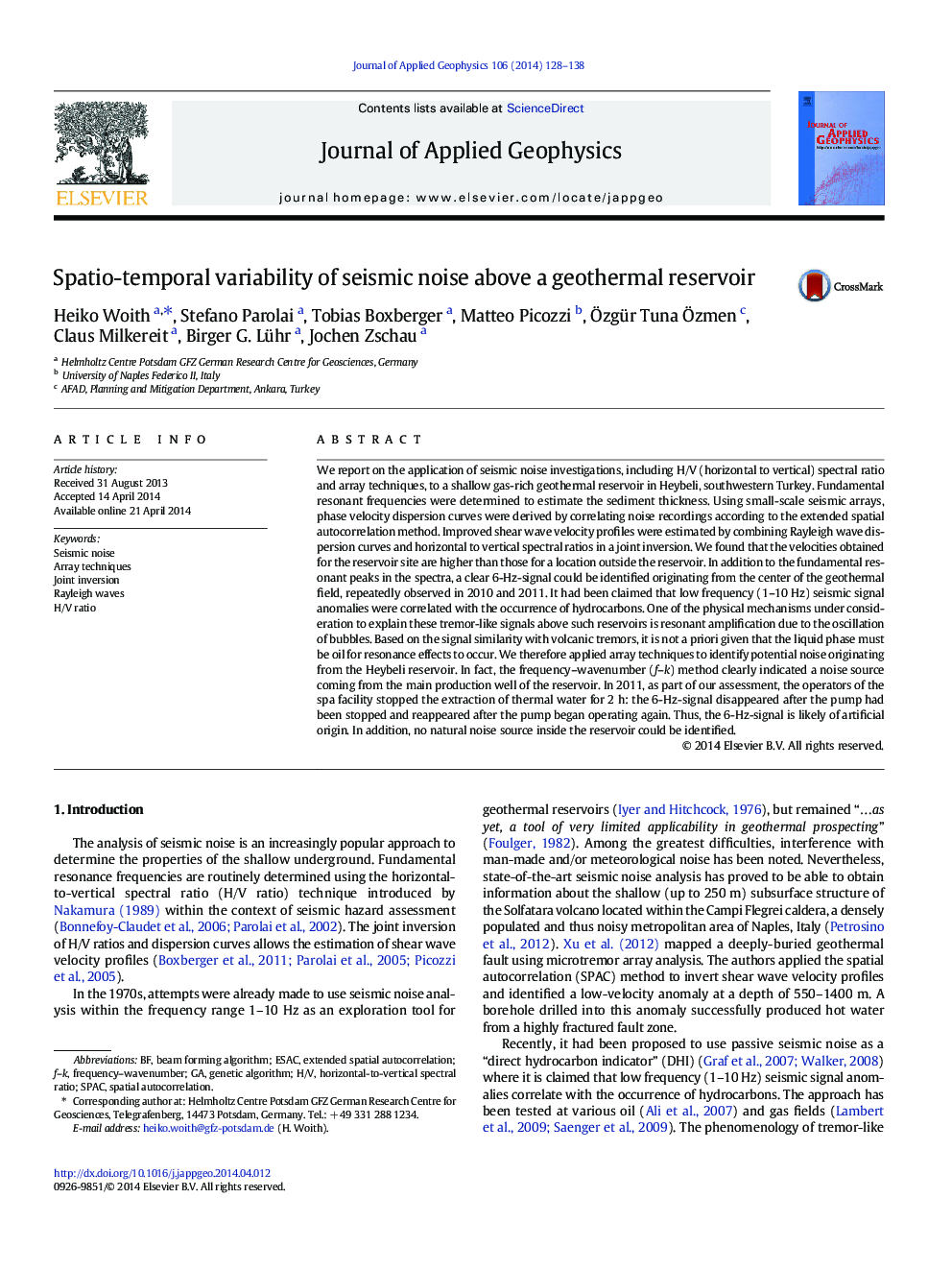| کد مقاله | کد نشریه | سال انتشار | مقاله انگلیسی | نسخه تمام متن |
|---|---|---|---|---|
| 4740139 | 1641145 | 2014 | 11 صفحه PDF | دانلود رایگان |
• Noise analysis at a geothermal reservoir using low-cost digitizers with 4.5-Hz-geophones
• The cap of the reservoir is characterized by increased shear-wave velocities.
• The identified 6 Hz source is related to the pumping of hot water.
• No natural noise source inside the reservoir was detected.
We report on the application of seismic noise investigations, including H/V (horizontal to vertical) spectral ratio and array techniques, to a shallow gas-rich geothermal reservoir in Heybeli, southwestern Turkey. Fundamental resonant frequencies were determined to estimate the sediment thickness. Using small-scale seismic arrays, phase velocity dispersion curves were derived by correlating noise recordings according to the extended spatial autocorrelation method. Improved shear wave velocity profiles were estimated by combining Rayleigh wave dispersion curves and horizontal to vertical spectral ratios in a joint inversion. We found that the velocities obtained for the reservoir site are higher than those for a location outside the reservoir. In addition to the fundamental resonant peaks in the spectra, a clear 6-Hz-signal could be identified originating from the center of the geothermal field, repeatedly observed in 2010 and 2011. It had been claimed that low frequency (1–10 Hz) seismic signal anomalies were correlated with the occurrence of hydrocarbons. One of the physical mechanisms under consideration to explain these tremor-like signals above such reservoirs is resonant amplification due to the oscillation of bubbles. Based on the signal similarity with volcanic tremors, it is not a priori given that the liquid phase must be oil for resonance effects to occur. We therefore applied array techniques to identify potential noise originating from the Heybeli reservoir. In fact, the frequency–wavenumber (f–k) method clearly indicated a noise source coming from the main production well of the reservoir. In 2011, as part of our assessment, the operators of the spa facility stopped the extraction of thermal water for 2 h: the 6-Hz-signal disappeared after the pump had been stopped and reappeared after the pump began operating again. Thus, the 6-Hz-signal is likely of artificial origin. In addition, no natural noise source inside the reservoir could be identified.
Journal: Journal of Applied Geophysics - Volume 106, July 2014, Pages 128–138
